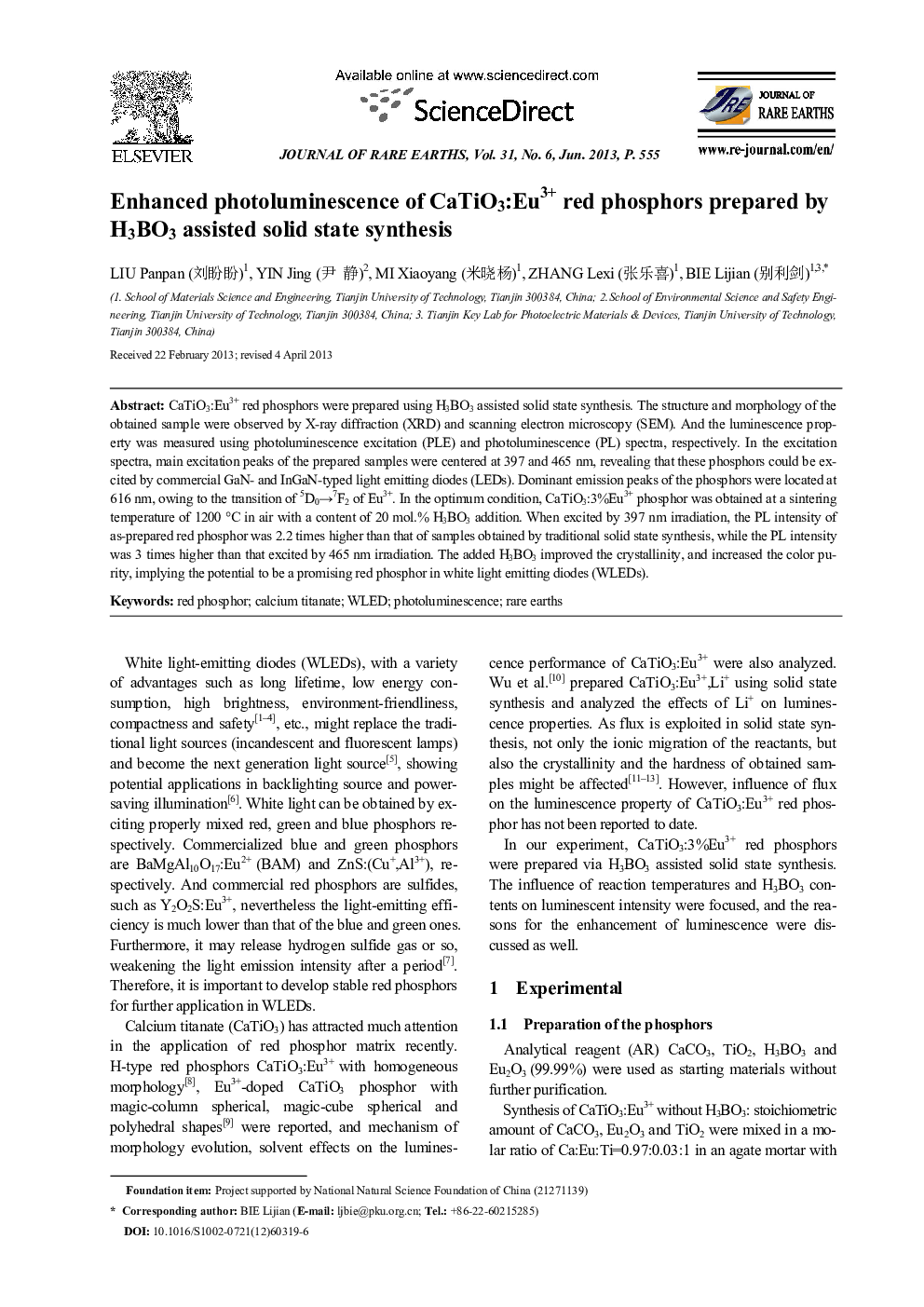| Article ID | Journal | Published Year | Pages | File Type |
|---|---|---|---|---|
| 1262201 | Journal of Rare Earths | 2013 | 4 Pages |
CaTiO3:Eu3+ red phosphors were prepared using H3BO3 assisted solid state synthesis. The structure and morphology of the obtained sample were observed by X-ray diffraction (XRD) and scanning electron microscopy (SEM). And the luminescence property was measured using photoluminescence excitation (PLE) and photoluminescence (PL) spectra, respectively. In the excitation spectra, main excitation peaks of the prepared samples were centered at 397 and 465 nm, revealing that these phosphors could be excited by commercial GaN- and InGaN-typed light emitting diodes (LEDs). Dominant emission peaks of the phosphors were located at 616 nm, owing to the transition of 5D0→7F2 of Eu3+. In the optimum condition, CaTiO3:3%Eu3+ phosphor was obtained at a sintering temperature of 1200 °C in air with a content of 20 mol.% H3BO3 addition. When excited by 397 nm irradiation, the PL intensity of as-prepared red phosphor was 2.2 times higher than that of samples obtained by traditional solid state synthesis, while the PL intensity was 3 times higher than that excited by 465 nm irradiation. The added H3BO3 improved the crystallinity, and increased the color purity, implying the potential to be a promising red phosphor in white light emitting diodes (WLEDs).
Graphical AbstractEmission and excitation spectra of CaTiO3:3%Eu3+ with different amount of H3BO3 under 465 nm excitation (inset is the relationship between the amount of H3BO3 and photoluminescence intensity)Figure optionsDownload full-size imageDownload as PowerPoint slide
